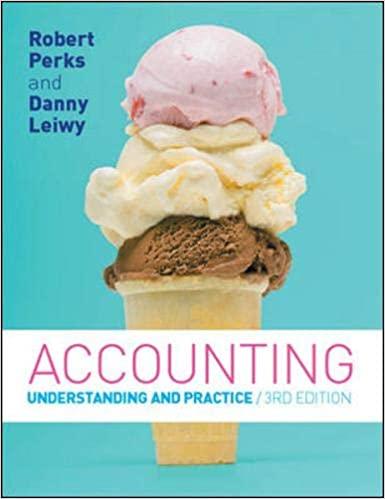Question
East Hill Home Healthcare Services was organized on January 1, 2014, by four friends. Each organizer invested $13,000 in the company and, in turn, was
| East Hill Home Healthcare Services was organized on January 1, 2014, by four friends. Each organizer invested $13,000 in the company and, in turn, was issued 8,300 shares of $1.00 par value stock. To date, they are the only stockholders. At the end of 2015, the accounting records reflected total assets of $728,000 ($51,000 cash; $503,000 land; $58,000 equipment; and $116,000 buildings), total liabilities of $224,000 (short-term notes payable of $112,000 and long-term notes payable of $112,000), and stockholders equity of $504,000 ($21,000 of common stock, $83,000 of additional paid-in capital, and $400,000 retained earnings). During the current year, 2016, the following summarized events occurred:
|

a. Sold 10,400 additional shares of stock to the original organizers for a total of $97,000 cash. b. Purchased a building for $68,000, equipment for $14,000, and four acres of land for $22,000; paid $10,000 in cash and signed a note for the balance (due in 15 years). (Hint: Five different accounts are affected.) c. Sold one acre of land acquired in (b) for S5,500 cash to another company. d. Purchased short-term investments for $16,000 cash. e. One stockholder reported to the company that 330 shares of his East Hill stock had been sold and transferred to another stockholder for S3,100 cash. f. Lent one of the shareholders $5,600 for moving costs, receiving a signed six-month note from the Required 1. Was East Hill Home Healthcare Services organized as a sole proprietorship, a partnership, or a Sole proprietorship 2. During 2016, the records of the company were inadequate. You were asked to prepare the summary of the preceding transactions. To develop a quick assessment of their economic effects on East Hill Home Healthcare Services, you have decided to complete the tabulation that follows and to use plus (+) for increases and minus () for decreases for each account. The first event is used as an example. Assets Liabilities Short-Term Long-Term Payable Payable Stockholders' Equity Short-Term Notes Investments Receivable Additional Common Paid-in Earnings Retained Land Buildings Equipment Notes Notes Stock Beg. 51,000 503,000 116,000 58,000 112,000 112,000 21,000 83,000400,000 Beg 86,600 97.000 10,400 148,000 503,000 116,000 58,000 | 112,000 112,000 + 31,400 169,600 400,000 4. Based only on the completed tabulation, provide the following amounts: a. Total assets at the end of the year b. Total liabilities at the end of the year c. Total stockholders' equity at the end of the year d. Cash balance at the end of the year e. Total current assets at the end of the year
Step by Step Solution
There are 3 Steps involved in it
Step: 1

Get Instant Access to Expert-Tailored Solutions
See step-by-step solutions with expert insights and AI powered tools for academic success
Step: 2

Step: 3

Ace Your Homework with AI
Get the answers you need in no time with our AI-driven, step-by-step assistance
Get Started


